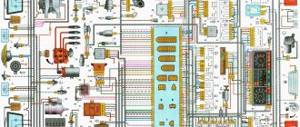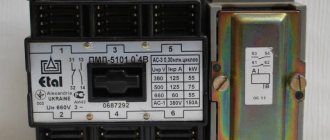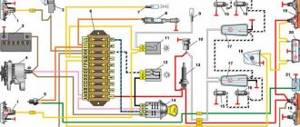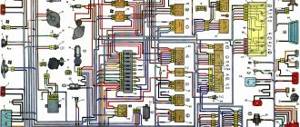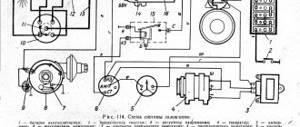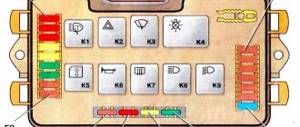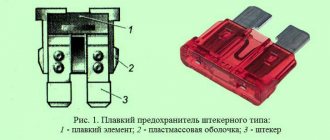Do-it-yourself flashing brake light in a car
Many F1 racing fans have noticed such a feature as a flashing brake light on cars.
When braking, such a light not only glows bright red, it also blinks quite often. And this is not done for beauty, although it has its own certain charm. Although a flashing brake light is used on F1 cars, this does not prevent the use of such equipment on cars intended for use on public roads. After all, this is not primarily done for beauty, but to increase safety.
Electrical circuit of a blinking brake light “option 2”.
This scheme implements the option of blinking during the first moments of the brake lights, and then the LEDs should shine evenly, without flickering. The circuit is based on 2 timers based on NE 555 microcircuits. First, the generated control signal is discretely supplied to the transistor in the same way as the first circuit, and then a constant voltage is generated on its basis. Eventually the relay stops working and becomes a conductor.
Note that if it is necessary to eliminate the influence of the circuit, it is necessary to move the switch SW1 to position 1-2. However, the transistor and relay will be used after such a switch.
To enlarge the diagram of a flashing brake light, just click on the picture; there is also a description and marking of the parts.
The circuit board for a blinking brake light with your own hands may look like the image below, and the circuit can also be implemented on a universal circuit board.
Shown here is a version of the finished board from the track side.
On the top side is the side where the parts are soldered.
What is the use of a flashing brake light?
A Formula 1 brake light, when activated, attracts more attention than a light that is constantly on. And all because blinking is a strong irritant for the human eye compared to a static, unchanging glow. This makes the flashing brake light more visible to other participants. And since this increases safety, then why not install such equipment on your car, especially since there is nothing complicated in the design of such a device, and it is quite possible to make a flashing brake light with your own hands. But this can only be done by a car enthusiast with at least a little knowledge of radio electronics.
To make a blinking brake light with your own hands, a microcircuit is included in the power supply circuit for the rear equipment, which will provide the flickering. The simplest design means that when you press the brake pedal, the light will flash with the same intensity. But there are also more “advanced” blinking brake light circuits in which you can set the operating algorithm.
Additional flashing brake light
Additional flashing brake light using the example of a Ford Transit. The other day I noticed that the additional brake light, which I made from LED strip in the summer, was not working. I decided that if I was going to redo it, I would do it properly right away. Moreover, I have long wanted that when you press the brake, the additional stop blinks several more times before it starts to light up constantly.
This device serves to increase the safety of an accident. It controls the brake light lamps in the following way: when you press the brake pedal, the lamps operate in a pulse mode (several flashes of the lamps occur within a few seconds), and then the lamps switch to the normal continuous glow mode. Thus, when activated, the brake lights are much more effective at attracting the attention of drivers of other cars.
So, the action plan is:
1. Circuit for the “blinker” 2. Circuit for connecting LEDs 3. Power stabilization. 4. Production of finished boards.
Well, let's start in order. Here is the circuit that will be responsible for the stop blinking.
It is based on the CD9043 chip, I used it in a DIP14 package, i.e. has 14 legs, 7 on each side. Power is supplied to 14 and 7 (this is not visible in the diagram).
By changing R1 and R4 we can change the amount of time that our source will blink before it simply lights up (i.e., we turned on power, the diodes began to blink for a certain time, a second or two, three or ten, as we configure) , resistor R1 and the flash frequency are responsible for this (from very slow blinking to very fast), resistor R4 is responsible for this. I used 3296W as trimmer resistors
The circuit also uses a powerful field-effect transistor IRF540N, which is capable of handling a load of 33 Amperes!, but of course it will heat up, so it will be MANDATORY to use a radiator.
I decided to stabilize the voltage using LM7812CV with an output current of up to 1.5A. Why not LM317? And I used what was at hand

